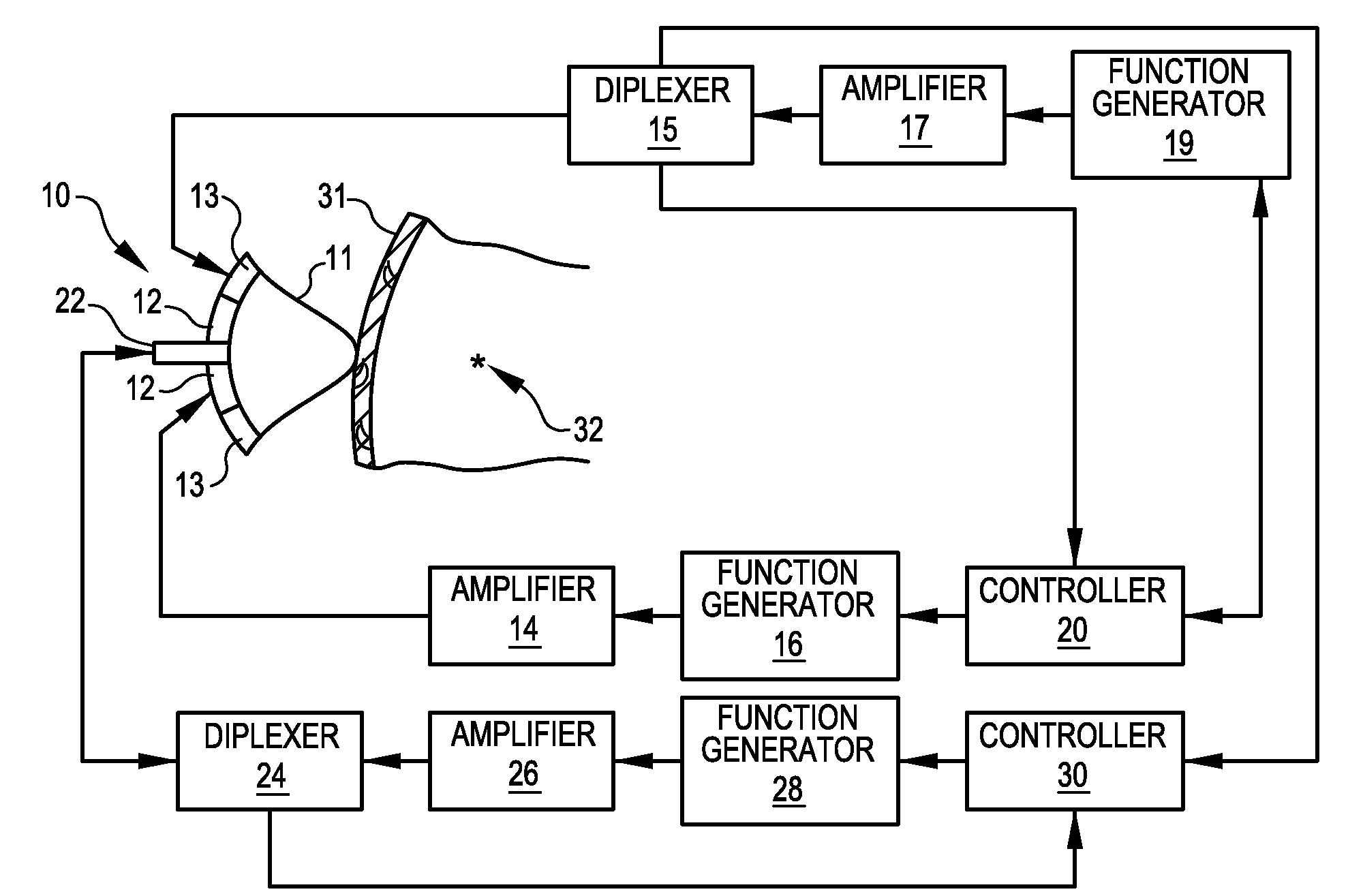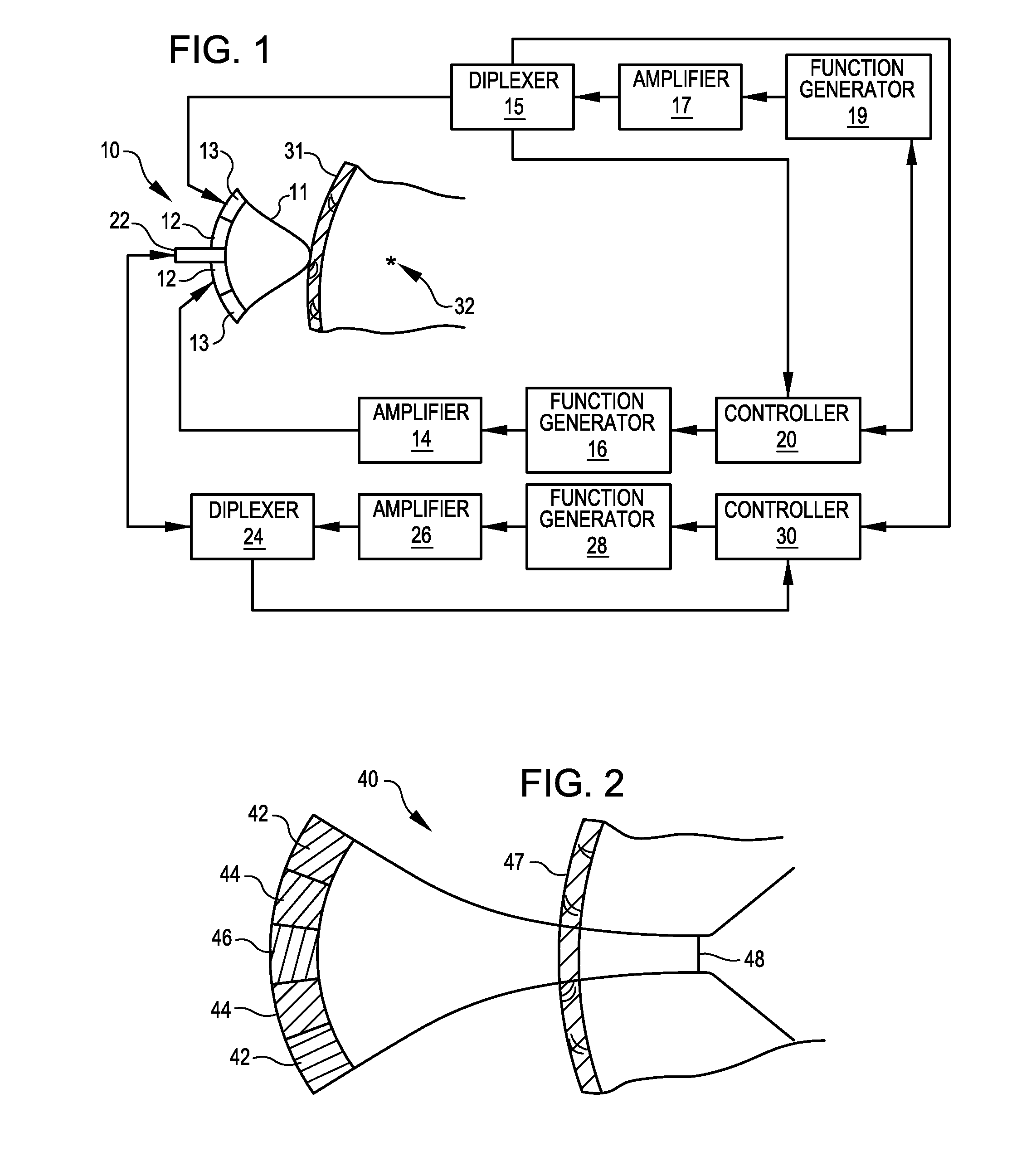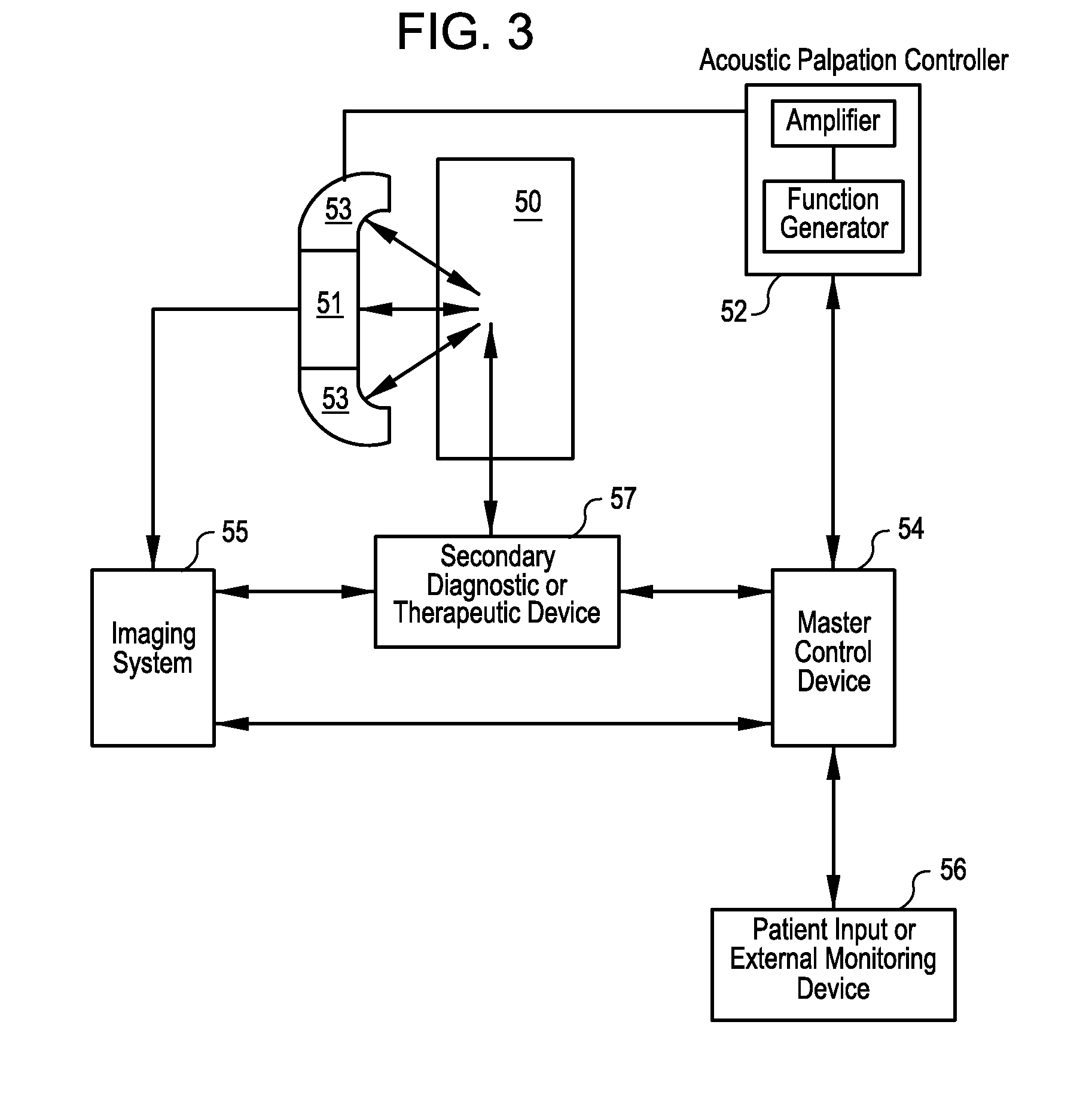Acoustic Palpation Using Non-Invasive Ultrasound Techniques for Identification of Target Sites and Assessment of Chronic Pain Disorders
a non-invasive, target site technology, applied in the field of acoustic palpation using non-invasive ultrasound techniques for identification of target sites and assessment of chronic pain disorders, can solve problems such as enlarged or otherwise abnormal, achieve highly sensitive localization of tooth decay, reduce exposure to ionizing radiation, and transmit ultrasound
- Summary
- Abstract
- Description
- Claims
- Application Information
AI Technical Summary
Benefits of technology
Problems solved by technology
Method used
Image
Examples
example 1
[0095]A prototype image-guided intense focused ultrasound palpation device was constructed, as illustrated in FIG. 4B. It consisted of a high intensity focused ultrasound (HIFU) transducer coupled with a diagnostic ultrasound probe from an Acuson diagnostic ultrasound device. The prototype device was used by the investigator to generate transient sensations in normal tissue in the palm of his hand using short, sharp but energetically small bursts of ultrasound. The following acoustic protocol evoked transient sensations of pain: a single pulse of 10 ms in duration at a frequency of 1.1 Mhz and spatial peak, time average intensity of approximately 10 W / cm2. The investigator did not perceive any lasting effects of the ultrasound application.
example 2
[0096]Experimental studies were conducted in an animal model to evaluate whether probing a sensitive tissue with intense focused ultrasound (iFU) produced detectable sensitivity. The prototype ultrasound transducer device consisted of a commercial piezo-electric, flat transducer built into a solid, cylindrical cone shaped aluminum housing having a flat distal face. The dimensions of the housing allowed ultrasound emitted from the transducer to have its focus at the proximal tip of the aluminum housing. The focus of the device was characterized with a needle hydrophone to measure the spatial peak and temporal peak intensity (I_sptp) as described in Miao et al. (2005). The focus of the experimental iFU device was about the size of a grain of rice, extending less than a centimeter from the transducer head with a width of less than half a centimeter onto and into the adjoining tissue. It was not necessary to provide image guidance of the focused ultrasound device, since the focal point ...
example 3
[0106]An experimental protocol was developed to demonstrate that intense focused ultrasound (iFU) can detect peripheral neuropathic pain in the extremity of an animal model of pain. Partial sciatic nerve ligations (pSNL, protocol described in Seltzer et al., 1990 Z. Seltzer, R. Dubner and Y. Shir, A novel behavioral model of neuropathic pain disorders produced in rats by partial sciatic nerve injury, Pain 43 (1990), pp. 205-218) were performed on one group of Sprague Dawley rats on one of their two hind paws, thereby sensitizing that paw.
[0107]The prototype iFU device consisted of a commercial piezo-electric, flat transducer built into a solid, cylindrical cone shaped aluminum housing whose dimensions allowed the ultrasound emitted from the transducer to have a focus at the proximal tip of the aluminum housing. The focus of the device was characterized with a needle hydrophone to measure the spatial peak and temporal peak intensity (I_sptp), as described in Miao et al. (2005). The f...
PUM
 Login to View More
Login to View More Abstract
Description
Claims
Application Information
 Login to View More
Login to View More - R&D
- Intellectual Property
- Life Sciences
- Materials
- Tech Scout
- Unparalleled Data Quality
- Higher Quality Content
- 60% Fewer Hallucinations
Browse by: Latest US Patents, China's latest patents, Technical Efficacy Thesaurus, Application Domain, Technology Topic, Popular Technical Reports.
© 2025 PatSnap. All rights reserved.Legal|Privacy policy|Modern Slavery Act Transparency Statement|Sitemap|About US| Contact US: help@patsnap.com



